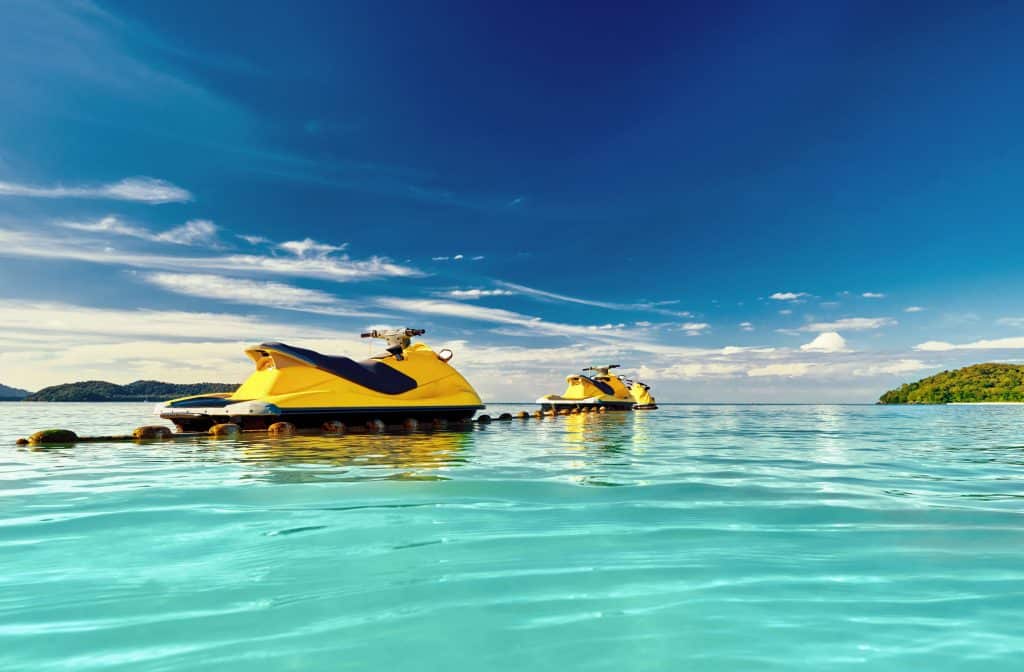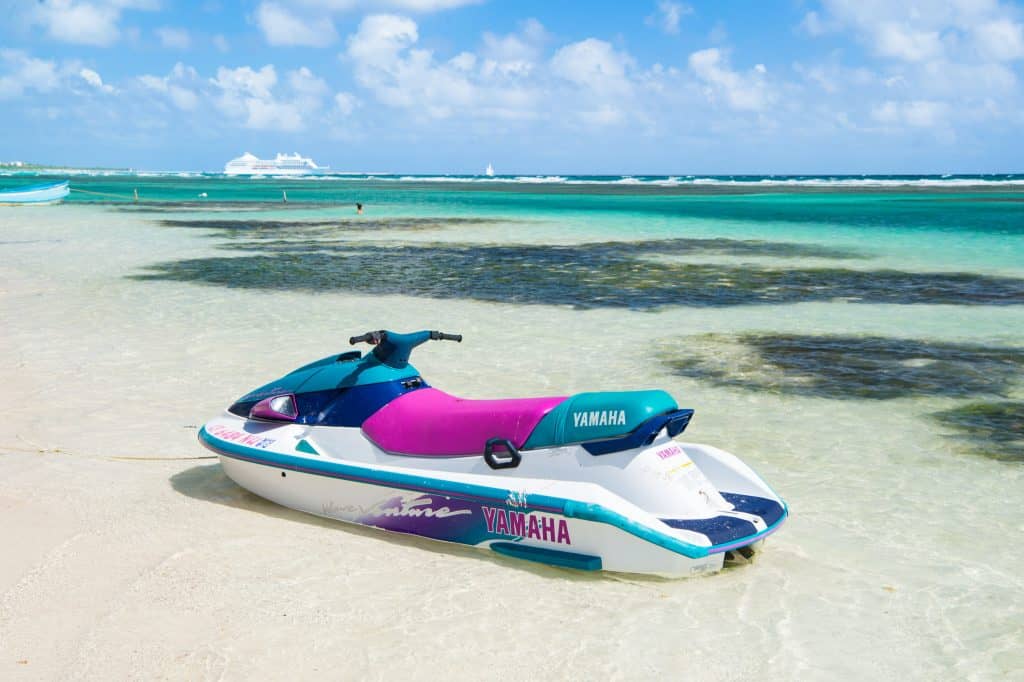
Once you get a jet ski you will want to do everything you can to take the best care of it. You will need to dock your jet ski at some point, so I will discuss how to do so without scratching it up.
Reduce to idle speed. As you get close, turn your engine off to come to a stop. Once you become parallel to the dock, get ready to grab onto a post on the dock. Tie your jet ski to the dock and place fenders on the side.
It is important that you practice many times on your jet ski before you actually dock your jet ski. You should practice at a dock that is not crowded and does not have a lot of vessels parked there. To practice, approach the dock at many different angles and practice lining up with it.
By getting the practice, you will be comfortable with your jet ski and know when you should shut off your engine to get you to the dock at a complete stop. The weather conditions will be different every day so it is important to practice with choppy water and smooth water, wind, and no wind, etc.
Different brands of jet skis will have different controls. In order to understand how to dock your jet ski, you will need to understand how the operation works.
Sea-Doo’s Operation
Sea-doo has what is called iBR (intelligent brake and reverse system). This means that instead of just a forward and backward operation, iBR gives a feeling of going forward, neutral and reverse.
This gave the opportunity for a stationary start-up. It also provided actual stopping power that acted like brakes. You can now rapidly stop a PWC in almost half the distance previously required.
You can operate while keeping your eyes focused on the water while your hands are on the handlebars. This makes safety on the water much easier and when you come into contact with other vessels you can slow down quickly.
Many people love Sea-Doo’s iBR and compare it to the operation of a car because you can be in neutral. It works like a gas and brake setup just like a car.
Sea-Doo’s iBR has the feeling of traditional gears where the rider uses the iBR lever to shift the PWC between forward, neutral, and reverse at idle speed.
Yamaha’s Operation

A few years after Sea-Doo came up with iBR, Yamaha created Reverse with intuitive deceleration electronics or RiDE. It promotes dual throttle controls; one to accelerate the boat in forward and one to slow the PWC or accelerate it in reverse.
RiDE is the only dual throttle system that allows the customers to switch between forward, neutral, and reverse without removing your hands from the handlebars.
Unlike Sea-Doo’s iBR, RiDE includes deceleration capabilities and the ability to steer while decelerating due to Yamaha’s patented side thrust bucket design.
Yamaha has a fluid transition between motions. Pushing the throttle causes forward acceleration when you apply force to the RiDE lever, it overrides that throttle to power the reverse. This acts as a forward throttle and reverse throttle.
Kawasaki’s Operation
Unlike Sea-Doo’s iBR and Yamaha’s RiDE, Kawasaki still uses the manual lever for forward and reverse with neutral between them. There is no brake option on Kawasaki jet skis.
The fact that Kawasaki is not updating their operations like Sea-Doo and Yamaha show that they like to keep things simple and stick with the original ideas. This is not helping Kawasaki with their business, but Kawasaki is known to have some hardcore engines that give you a lot of power.
Some people are used to the old school operations and have no trouble with docking their jet ski with the manual levers. But in today’s society, most people have Sea-Doo PWC or Yamaha because of their advanced technology that helps make operating easier and more convenient.
In my opinion, if you purchase a Kawasaki jet ski you should practice operating it in an area that has no one near it. It is harder to control it because there is no “brake” like the newer operations have.
It will take much longer to come to a complete stop, so practice at least 10 times when learning how to dock your Kawasaki.
Things to Keep in Mind When Docking
Docking a jet ski can be difficult if you are a beginner, but with practice, it can become like second nature.
When docking:
- When you are brand new to jet skiing, take time in a private area with few to little people or other vessels to practice
- Have someone waiting for you on the dock to help you when approaching the dock
- Always slow down way before you reach the dock
- Approach the dock at an angle
- Keep your arm out towards the deck to avoid contact with the jet ski
- Shut off your engine to come to a complete stop at the dock
- Have your bungee dock line ready to tie around the dock
- Have some bumpers/fenders ready to attach to the side that will be against the dock
- Make sure there is enough room between other vessels before you park your PWC
- Keep your key around your wrist once you leave the jet ski
Must-Have Accessories for Docking
- Bungee Dock Line– Tying off with a bungee dock line is way more convenient than using a marine rope. Because this cord stretches, it provides a little bit of give on choppy days which will absorb the bumps and shock
- PWC Fender– This prevents the PWC from bumping up against the dock and scratching it up. The hull will be protected if 2 or more of these are attached to your jet ski
- Jet Ski Lift– One way to get your jet ski out of the water easily is by using a jet ski lift. After you dock your jet ski you may want to lift it up and clean it and then put it on your trailer. This accessory helps make your job easier
- Jet Ski Cover– If you are going to be leaving your jet ski at the dock for more than an hour I would recommend putting a cover on it so that there is no sun damage done while you are away
